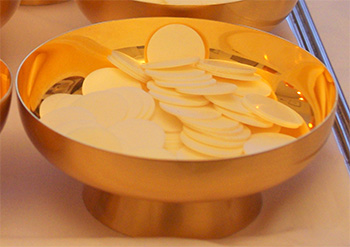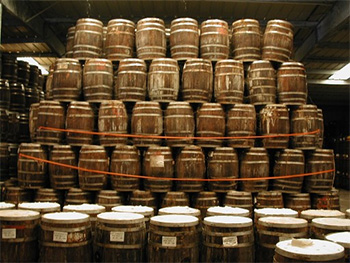6 Monopolies Normal People Have No Clue Exist

One nice thing about living on a planet with people on it is ideas spread out. If you want a pizza, there's a good chance you can find a decent one close by, and you don't necessarily have to order one by mail from Dr. Randy P. Pizza, the one man who invented pizza in Sicily in AD 900.
But sometimes, the system breaks down. Whole industries are balanced on tiny points, which means either one evil genius is calling the shots for everyone or everything is seconds from collapsing -- or both.
One Private Company Controls All Of Cheerleading
Netflix put out a cheerleading documentary series this year, naming it Cheer because clear marketing leaves no room for creativity. It follows a squad from Texas as they prepare for competitions, and since we all know how drama works, you think it'll end with the team duking it out with rivals at the big championship game. And the final episode does go to the National Cheerleading Championship in Daytona, but it blindsides us by saying the crew can't film there, because Varsity Brands forbids it.
Don't Miss
Which marks the first time many viewers ever heard of Varsity Brands, despite them being a billion-dollar company. Varsity Brands, it turns out, runs American cheerleading. There is no non-profit "National Cheerleaders Association" that oversees the sport -- there was one, but Varsity Brands bought it. Varsity owns all the cheerleading competitions. It owns the cheer camps. It owns insurance that covers all the gyms where cheerleaders practice. It owns the bodies that write cheer rules.

It manufactures all the cheerleading equipment everyone uses. Uniforms (they own a trademark on them), pom-poms, underwear, bows -- they're all manufactured by Varsity Brands. Oh, you get independent companies making some of that stuff, but teams end up buying it from Varsity because Varsity arranges kickbacks with vendors, and the more Varsity doodads you use, the more points Varsity awards you in competitions. Really, the whole concept of cheerleading is just a tool for Varsity Brands to sell more merchandise.
That's not us being cynical. That's what Varsity Brands themselves said, in court. The case was about whether cheerleading is a sport, and Varsity testified that it isn't, it's just their vehicle for promoting sales. You'd be forgiven for otherwise thinking cheerleading is a sport. It's competitive, and it's more dangerous than most sports, depending on how you crunch the numbers. But a lot of states don't recognize it as one. Regulating it as a sport would make it much safer, but it could put Varsity on the hook for paying for that regulation, so Varsity lobbies to keep it from becoming one, and goes on making billions selling sequins.
A Quarter Of All Trade With Canada Is Across One Bridge, Owned By One Guy
Most US-Canada trade isn't by ship, understandably, or air. It's mostly by road, most of this road trade is across the Windsor-Detroit border, and most of that is over just one bridge. That adds up to between a sixth and a quarter (depending of what source you look at) of all trade between the countries, and it's all over a bridge owned by one man named Manuel. It's the only border crossing in the world owned by a single person. This wasn't supposed to happen.

The Ambassador Bridge was always privately owned, but when it was first built to celebrate the end of World War I, it at least wasn't under the control of a single billionaire. But things went bad for the company when the Depression hit, so they issued a whole lot of new stock to stay afloat. Half a century later, transportation heir Manuel Moroun bought all the shares that were available, bought a bunch that weren't available, and boom, he now owned a 1.5-mile bridge. Canada tried to step in and get a stake in it, but they failed, despite taking Moroun to court over alleged mob ties.
So, what's the problem with one dude owning such an important border crossing? For starters, bridges have to be maintained, often at a loss, so they don't always work so great as private ventures. When Canada finally gave up on their years of fighting Moroun, they made him agree to make improvements to the bridge, which he promptly did not do. He does still manage to make vast amounts of money off the bridge, though. He gets this by charging his own tolls (money that would otherwise support both the bridge and the entire US highway system) and by setting up his own duty-free shops close to the crossing.
Tired of this madness but unable to wrestle the Ambassador away from Moroun, the US and Canada finally agreed to make their own competing crossing, which they swear will be much cooler than the old lame bridge. It'll be called the Gordie Howe International Bridge, named after a Canadian hockey player who played for Detroit, as he is the ultimate symbol of international unity. Moroun has fought to keep the new bridge from being built, but by the time it's finished in 2024 or later, he'd be 97 years old, so maybe he won't care anymore.
Half Of All American Ballet Is Just Christmas Shows Of The Nutcracker
Isn't it kind of crazy that something like ballet is able to make any money nowadays? Every kind of entertainment, from pop music to movies, is being told they have to dumb things down and appeal to as wide an audience as possible, and then there are ballet venues, sticking to their high art and somehow raking in enough to afford (we assume) their weekly caviar yacht parties. Sure, there are wealthy people who go to the ballet, but they don't go every night, right?
The most logical explanation is the entire field of ballet is just a cover for a massive Russian cocaine-for-diamonds/human trafficking operation. But there's another explanation, a true one: Ballet doesn't make money, most of the time. The whole year, they lose money, but then they make it all back and then some by putting on The Nutcracker around Christmas. Families come to that show. You don't have to be a fan of dance or classical music to enjoy it. In fact, you don't have to enjoy it at all. It's Christmas, so you just go, it's tradition.

That one play makes up half of all ballet revenues. These revenues themselves consist of not just ticket sales but donations and profits from classes, so The Nutcracker must snag a lot whole more than half of ticket sales. The play was considerably less of a big deal even a decade ago, but every company's dependence on it keeps growing. So, you can thank The Nutcracker for subsidizing the entire art form -- or, alternatively, if you're a real ballet fan, you can get mad about how this one famous show is dominating the entire industry and so holds back any innovation.
Either way, you now know why Disney thought it was a good idea to spend $120 million on a big-budget Nutcracker adaptation last year, which you've already forgotten existed. The play's a major moneymaker. At least, it is when you put it on live -- the movie bombed. Luckily, Hollywood learned its lesson, and they absolutely haven't put on any other scary stage-to-film adaptations since then.
Half The World's Soccer Balls Are Made In One Town, In Pakistan
In 1889, the land we now call Pakistan was infested with British squatters, and a group of them had set up a military garrison in the city of Sialkot. One British sergeant there discovered that his football was torn, which sucked for him, because no replacements were to be found in the immediate area, and ordering a new one from back home would take eight months. So the sergeant, whose name is lost to history, approached a saddle-maker named Fazal Elahi and asked him to patch the ball for him.
The man complied, and when the ball next needed repairs again, he instead made a new one from scratch. The sergeant, who really liked playing with his balls, was delighted, ordered more, and introduced Elahi to every colleague who passed through the area. Elahi took on an apprentice and shifted his specialty from saddles to soccer. Sialkot was a good place for this new trade, since there was plenty of leather and people who specialized in stitching the stuff, so a bunch of copycats followed suit.
Sialkot made balls for foreigners in Pakistan and India, then when England paused making its own balls during World War I, Sialkot ramped up production and started exporting. Then when the British left the Indian subcontinent altogether, Sialkot's industry was still set to crank out more product, so they took to exporting even more. Today, some 40 to 70 percent of all soccer balls in the entire world are made in this one town, in shops controlled by 100 companies.

We could depress you with stats on how little each Pakistani worker gets for hand-stitching those balls sold elsewhere by Nike and Adidas, but that would be misleading because these guys actually earn twice the average national wage. Labor conditions are also somewhat better than in a whole lot of other industries there -- they used to rely on child labor, but they've clamped down on that since then. The one real irony here is that soccer isn't even really popular in Pakistan. Not when compared to how much nearly every other country likes the sport, or compared to how much Pakistan likes sucking at cricket.
80 Percent Of Eucharist Wafers Are Made By One Company That Pushed Out The Competition
To a layperson, communion wafers that you get in church don't look a whole lot like the body of Christ, and they don't look much like bread either. They're flat stiff circles that resemble cardboard more than anything else. They don't fold like tortillas or snap like matzah but just sort of dissolve, like those packing peanuts you weren't supposed to eat as a kid but totally did anyway. Who is responsible for churning out all these wafers that defy common definitions of what food is?

It's not the Vatican, or any other official church organization. Instead, nearly all Eucharist wafers in the United States -- about 80%, and also 80% in Canada, the UK, and Australia -- are made by a Rhode Island bakery called the Cavanagh Company. Their story began in 1943, when some nuns needed help patching up their ovens (not a euphemism). John Cavanagh followed up this service by making bread of his own. And then his family spent the next few decades mailing samples of their wafers to congregations all over the country, driving away all competitors.
Those competitors were nuns and priests who, before the Cavanaghs took over, generally baked actual fluffy bread. Baking was a sacred act (even though the bread doesn't actually transform to flesh until that special part of mass, when the bass drops), and some pious people today are bitter that the art is now lost to them. Today, the Cavanagh Company makes a billion wafers a year. It's one of the few products where you reliably make money while selling them for less than a penny each.
The Eucharists are made in what the guy running it calls a "very large, 500-pound waffle iron." We don't know how religious people would react to that news, and we also don't want to make too big a deal over how the bakery sells the same wafers to all churches, whether they believe it becomes the body of Christ or not. Let's not needlessly start any new wars. We do have to point out though that the bakery also sells the stuff to regular stores in Canada, where people just buy them as snacks, because we missed an opportunity to mock Canadians earlier in this article and don't want to make the same mistake twice.
Tabasco Has Just One Factory To Make All Its Sauce
Speaking of stuff that's both food and the sacred blood of God, Tabasco sauce can be found in 185 countries with sales totaling 700,000 bottles a day. So, in the unlikely event that you'd given the matter much thought before now, you'd have assumed that this was some big international operation. The sauce doesn't look like the sort of thing that'd be hard for the company to manufacture all over. According to the label, it just has three ingredients: tabasco peppers, vinegar, and salt.
The peppers are where the tricky part comes in, and it's why Tabasco doesn't make its sauce worldwide after all. They make absolutely all of it in one factory in Avery Island, Louisiana. It seems that the Tabasco company doesn't want their special pepper getting spread too far around, so they grow all the plants on-site in Louisiana, and make all the sauce right there, by aging the stuff in barrels for three years.

But that's not really weird. The weird part is there's not physically enough room to grow all those peppers in one place. So the plants that bear the seeds are all grown in Louisiana. Then those seeds are shipped all over the world, to plantations in Mexico, Central America, South Africa, and Mozambique. Those grow into peppers that don't bear seeds. And the peppers are then ... all hauled all the way right back to the Avery Island factory so they can get chucked into those barrels.
No one over in Tabasco headquarters seems to think there is anything strange about all this. If this really is all some paranoid plot to make sure no one else gets their hands on those precious tabasco seed-bearing plants, that's not a battle that makes a whole lot of sense. The plant already grows wild in Mexico (in the Mexican state of Tabasco -- that's where it gets its name), and anyone who wants can personally pick a peck of peppers and pickle them to prep a pack of their own.
Follow Ryan Menezes on Twitter for other stuff no one should see.
Top image: KCBalletMedia/Wiki Commons